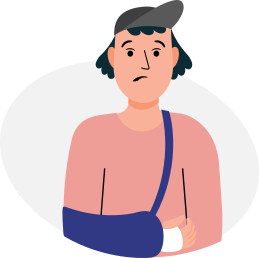WHEN TO TRAVEL TO Haiti
Choosing the right period for your trip to Haiti can make all the difference. It's important to consider climatic elements, seasonal events and peak tourist periods to maximize your travel experience.

Location
Climate
Tourist seasons in Haiti: Low season vs. high season
Like most tropical destinations, Haiti has two main tourist seasons: the summer and the winter. low season and the high season. Each has its advantages and disadvantages, so let's take a closer look:Low season (April to November)
The low season generally runs from April to November and corresponds to the wettest months of the year. During this period, there are fewer tourists, which means that hotel and flight prices are often cheaper. However, the climate can be highly variable, with frequent showers and high temperatures, especially between June and October. In addition, some tourist sites may be closed or less accessible due to bad weather. On the other hand, it's during the low season that some of the most popular traditional festivals such as the Feast of the Dead in November. If you're flexible and ready to deal with changeable weather, the low season can be an ideal time to discover Haiti.High season (December to March)
Haiti's peak tourist season runs from December to March, coinciding with the driest and coolest months of the year. During this period, the climate is generally sunny and pleasant, which facilitates access to tourist sites and outdoor activities. However, expect higher prices for hotels and flights, and more crowds at popular attractions. If you prefer to travel during the high season, we recommend that you book your accommodation and flights well in advance to avoid extra costs and disappointments linked to availability.Major cultural events in Haiti
Haiti is a country rich in culture and boasts an impressive calendar of events throughout the year. Here are just a few of the must-see cultural events not to be missed during your trip:- National Carnival (February or March) : The National Carnival is one of the country's most important and colorful events. It usually takes place in February or March (dates vary according to the lunar calendar) and lasts several days. Festivities include parades, concerts, traditional dances and flamboyant costumes.
- Flag Day (May 18): This national holiday celebrates the creation of the Haitian flag in 1803, and is marked by official ceremonies, speeches and cultural events across the country.
- Day of the Dead (November 1 and 2): Like the famous Mexican festival Dia de los Muertos, Day of the Dead is a Haitian tradition that honors the deceased with offerings, prayers and celebrations. This event offers a unique insight into local culture and beliefs.
- Christmas (December 25): Although less extravagant than some of the holidays mentioned here, Christmas remains an important time for Haitians, not least because of its religious and family traditions. You'll find festive decorations, carols and markets all over the country.
Public holidays in Haiti
It's important to take public holidays into account when planning your trip to Haiti, as they can affect your plans and the services available locally. Here are some of the main public holidays in Haiti:- New Year (January 1) : The New Year also marks the Independence of Haiti, which became the first black republic in 1804. Celebrations include parades and festivities throughout the country.
- Remembrance Day (January 12) : The holiday commemorates the tragic earthquake of 2010, which killed over 200,000 people and left millions homeless. Commemoration ceremonies are held across the country.
- Labour Day (May 1) : As in many countries, this day celebrates workers and generally marks a day of rest for most Haitians.
- Assumption Day (August 15) : This religious festival celebrates the ascension of the Virgin Mary into heaven and is observed by many Catholics in Haiti.
Insurance

Your credit card does not cover you in all situations, that is whyIt is essential to take out insurance before you leave to avoid any unpleasant surprises. If you need to see a doctor or be hospitalized, in some countries, medical costs are very high and you will then find yourself having to pay several thousand euros.
Our partner Chapka Insurance proposes the contract CAP ASSISTANCE 24/24 with many essential guarantees.


Flights

Your flight has been cancelled or delayed ?
You may be eligible for a compensation of up to €600 ! For this, lawyers are responsible for handling your claim with the airline and are only paid when the reimbursement is effective.
In conclusion, no financial risk for you, only advantages!
Statistics on immigration to Haiti
In this first section, we analyze the main data on immigration to Haiti, particularly in terms of mobility and demand centers.Migrant entry routes
Migrants coming to Haiti use various routes to enter the country. These routes include :- Family migration This mainly concerns family members joining a relative already settled in Haiti.
- Professional migration It affects people who travel to Haiti to work or set up a business.
- Student migration This includes foreign students coming to Haiti to pursue their studies.
- Humanitarian migration Asylum: this concerns asylum seekers and refugees who come to Haiti for protection reasons or to escape dangerous situations in their country of origin.
Migrant demand and mobility center
The demand center is a key indicator for measuring migrant mobility in Haiti. It refers to the number of visa applications submitted each year by foreign nationals. According to available figures, there has been a gradual increase in the number of visa applications in recent years. This trend reflects the growing interest in Haiti as an immigration and tourism destination.Most popular visas in Haiti
Now that we've looked at the main statistics on immigration to Haiti, let's turn our attention to the visas most frequently requested by people wishing to come to this country.Tourist visa
Unsurprisingly, the tourist visa is one of the most popular types of visa in Haiti. Indeed, with its paradisiacal beaches, rich culture and historic heritage, Haiti attracts many travellers from all over the world to discover its charms.Business visa
Haiti is also a popular destination for professionals who come to work or set up a business. Business visas are one of the most popular categories for migrants. To obtain this type of visa, applicants are generally required to provide a work contract or a letter of invitation from a Haitian company.Student visa
Haiti also welcomes international students wishing to pursue their studies at one of the country's higher education establishments. To do so, they must obtain a student visa, which is issued on presentation of a letter of admission to a Haitian institution and proof of their ability to support themselves for the duration of their studies.International tourism in Haiti: key figures
Finally, let's take a look at the statistics relating to international tourism in Haiti. Every year, the country attracts thousands of visitors from all over the world, who come to discover its cultural and natural heritage and enjoy its heavenly beaches.International tourist arrivals
According to available data, the number of international tourist arrivals in Haiti has grown significantly in recent years. This trend testifies to the country's growing appeal as a tourist destination, particularly for travellers seeking authenticity and off-the-beaten-track experiences.Geographical distribution of tourists
Tourists visiting Haiti mainly come from North America, Europe and Latin America. Visit UNITED STATES, THE Canadathe France and the Dominican Republic are among the main countries of origin for international visitors.Economic impact of tourism in Haiti
The tourism sector represents a major source of revenue for the Haitian economy. Spending by international tourists has a direct impact on employment, creating opportunities in accommodation, catering and travel-related services. In addition, the development of tourism helps to enhance and preserve the country's cultural and natural heritage.

